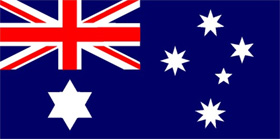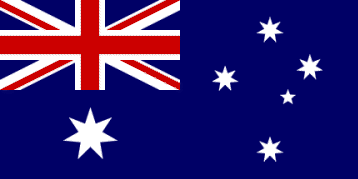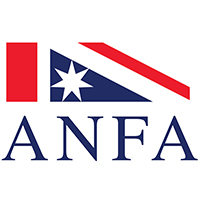Birth of the Flag

The Australian National Flag was born on September 3rd, 1901. This followed the Federation of Australia on January 1st, 1901, which was the formation of the Commonwealth of Australia.
The original flag was slightly different to its present day form (which started in 1908), in that each star on the original flag had a unique number of points.

In 1901, the Commonwealth Government sanctioned the publication Review of Reviews to hold a public competition to design the Australian National Flag. The flag was selected from 32,823 entries.
On September 3rd 1901, the Prime Minister, Sir Edmund Barton was the master of ceremonies for the first raising of the large, blue national flag, measuring 11 x 5.5 metres over the first Parliament House in Melbourne.
September 3rd has been officially proclaimed and is celebrated annually as our Australian National Flag Day.
Australian National Flag from 1908

By 1903, the stars of the Southern Cross were standardised, with the 4 large stars each 7 points and the smaller star remaining at 5 points.
In 1908, the Commonwealth star was changed from 6 to 7 points, with 6 points representing the states, and the 7th point representing all territories.
Meaning & Symbols
The Australian National Flag is a design of striking stars and crosses. This unique combination of devices has created an attractive and meaningful flag which, by law, custom and tradition is Australia’s chief national symbol.
Our flag should be treated with dignity and respect as it represents all Australian citizens, equally of whatever, background, race, colour, religion or age.
Our flag is a reminder of the contributions of past and current generations to the nation and of the inheritance that will be passed to future generations.
The Stars

The Commonwealth Star is the emblem of Australian Federation. Six points represent the states and the seventh all the federal territories which together constitute the nation, the Commonwealth of Australia.
The constellation of the Southern Cross indicates our geographical location in the southern hemisphere. This constellation of stars relate to the various indigenous legends and remind us of our rich and precious Aboriginal and Torres Strait heritage.
The Crosses

The three crosses, St George, St Andrew and St Patrick serve to represent the principles and ideals on which our nation was founded and is based on today; including parliamentary democracy, the rule of law, freedom of speech and the rights and responsibilities of citizens.
Australian Flag Rights
Every Australian Citizen has the right and privilege of flying or displaying the Australian National Flag (ANF), our flag of “STARS AND CROSSES”, with dignity and respect in accord with the rules of flag etiquette and protocol.
The Australian National Flag is Australia’s chief national symbol by law, custom and tradition, belonging equally to all Australian citizens. Usage of the ANF is shared with Government though, unlike the National Coat of Arms, the Australian National Flag is owned by the people exclusively, under law, in the Commonwealth Flags Act.
The Australian National Flag should be treated with dignity and respect at all times as it identifies and represents our sovereign nation both at home and overseas and all citizens, equally of the Commonwealth of Australia to whom it belongs.
Australia’s youth and our new citizens have the right to full and accurate knowledge of the history, heritage and significance of Australia’s national flag of “Stars and Crosses” which represents the principles and ideals on which our country was founded and the inheritance of future generations.

